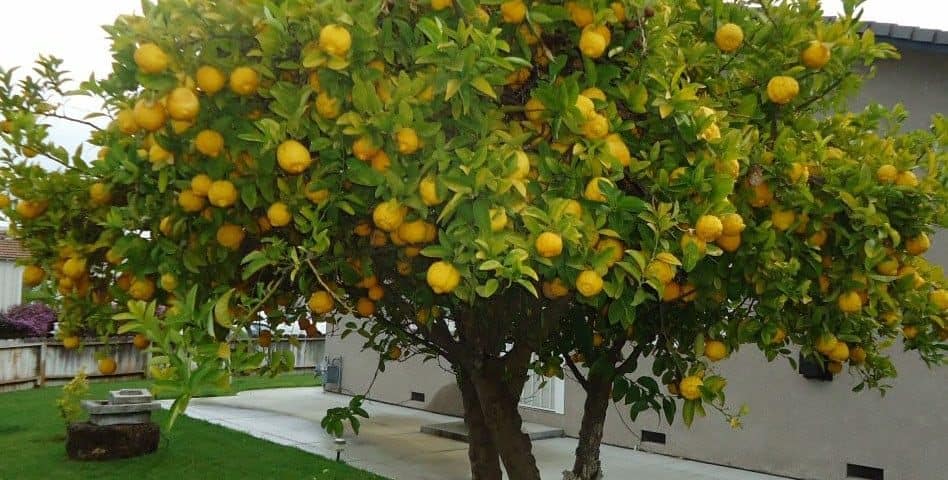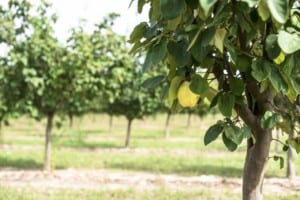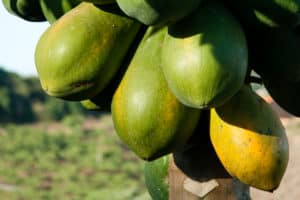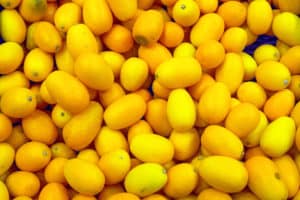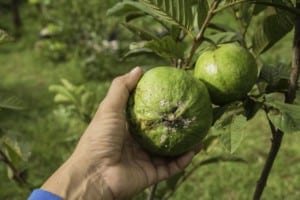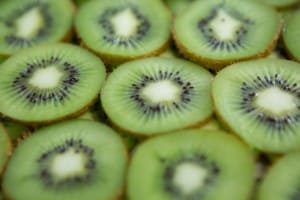Lemon trees not only dot your yard with color, but they also produce yummy fruit for you to enjoy all year long. The trees are relatively easy to grow and will generate luscious fruits to use in a variety of dishes. There are also many types for you to enjoy. This is a list of some of the best types of lemon trees.
Contents
Related: 5 Lemon Tree Benefits
Although people generally think of the same yellow fruit when they think of lemons, there are actually numerous lemon tree types to choose from. They can be recognized by the size and color of their fruit and usually grow 10 to 20 feet in height.
With oblong and elliptical leaves that turn dark-green in summer, lemon trees have fruit that can be small or large, pale-yellow, or brightly colored. Many people are unaware that lemon trees are part of the evergreen family and are actually citrus tree hybrids.
To find the best lemon tree for your home, you have to know which growing area you live in, which is easy to determine with a little research online. Lemon trees can produce fruits that are tart or sweet, so you have options when it comes to the best one.
Some people say lemon trees help repel insects from your garden, and may also reduce the chance of yellow jacket wasps choosing your yard as the place to build their new nest. Having a lemon tree brightening up your garden will thus reduce the need to burden the soil with things like lawn insect killer.
Like other citrus fruits such as tangerine, lemon trees do best in areas that do not get frost, which is why they are recommended for zones 9 through 11. The fruit itself varies in size, color, and taste, and it is easy to learn how to recognize the many different types.
1. Bonnie Brae Lemon Tree

Mostly associated with the San Diego area, these lemons are oblong in shape and seedless. With their smooth, very thin skin, Bonnie Brae lemons were a huge success at the World’s Fair in New Orleans in 1885.
These lemons have never been a huge commercial success, which is why they are only found in San Diego. Their thin rinds are one of the reasons why this is so. They look a little more like a lime than a lemon, but in their heyday they were quite popular.
Of the many lemon tree types, the Bonnie Brae lemons are one of the juiciest types and can, therefore, be used to flavor numerous foods and dishes. The juiciness of this lemon is, in fact, one of the reasons why people love it once they try it.
2. Eureka Lemon Tree
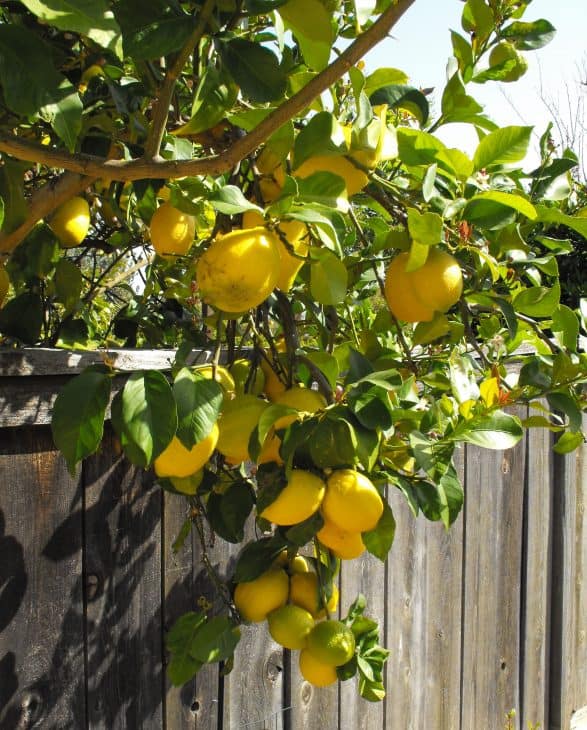
If you’ve ever purchased lemons in the grocery store, chances are good they were Eureka lemons. They originated in California and bloom all year long, which is why they are called the “four seasons” lemon. They are very popular and tasty lemons that have many uses.
Eureka lemon trees grow both fruit and flowers throughout the year, and they are commonly purchased by domestic customers who are looking for a tree for their backyard. There are many types of Eureka lemons, including one with pink flesh and a green-and-yellow variegated outer skin.
These lemons are a great all-purpose lemon that work perfectly as a seasoning or for making homemade lemonade, as well as dishes such as lemon meringue pie and marmalade. They also have a pleasant aroma and contain few to no seeds.
3. Lisbon Lemon Tree
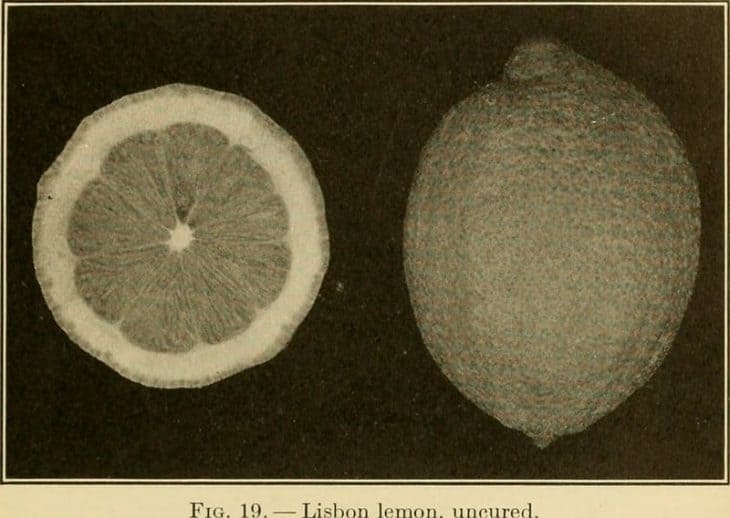
Medium in size and bright-yellow in color, Lisbon lemons are quite common and are available all year long. They are just as common as the Eureka types and similar in size and color. Although they grow all year around, their peak blooming time is from winter to the early spring months.
Lisbon lemons are high in vitamin C, potassium, and folate, and they are mostly used for their zest and their juice, which has a great flavor. They are often used as a garnish for beverages and certain dishes, and you can cook fish and poultry with them as well.
Another advantage of using this lemon is their ability to last up to two weeks as long as you put them in the refrigerator. You can even freeze their zest or juice for future use, so Lisbon lemons are a very versatile type of lemon.
4. Ponderosa Lemon Tree
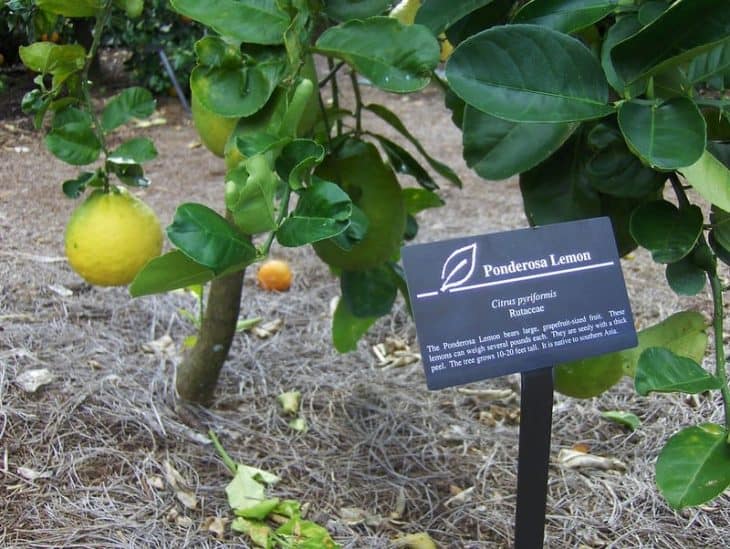
Once you see these types of lemons, you’ll understand why they were named Ponderosa lemons. They are quite large in size and usually weigh in the two- to four-pound range, even though their nickname is the “five-pound lemon.”
With a thick and bumpy skin, Ponderosa lemons have a typical yellow color and juicy flesh that is very seedy. They have a pale yellow-green color and are acidic just like the average lemon is. It is thought that these lemons are a cross between a lemon and a citron, although this is unconfirmed.
Ponderosa lemons are normally grown in very warm climates and are attractive, very tasty, and edible. You can use them to cook various dishes, make lemonade, flavor dishes, and even in various desserts. They are also sturdy and can last up to six weeks if refrigerated.
Compared to other lemon tree types, the trees that grow Ponderosa lemons are fairly small, but still eye-catching. They are often used as ornamental trees in doorways and patio areas, among others.
5. Italian Sorrento Lemon Tree
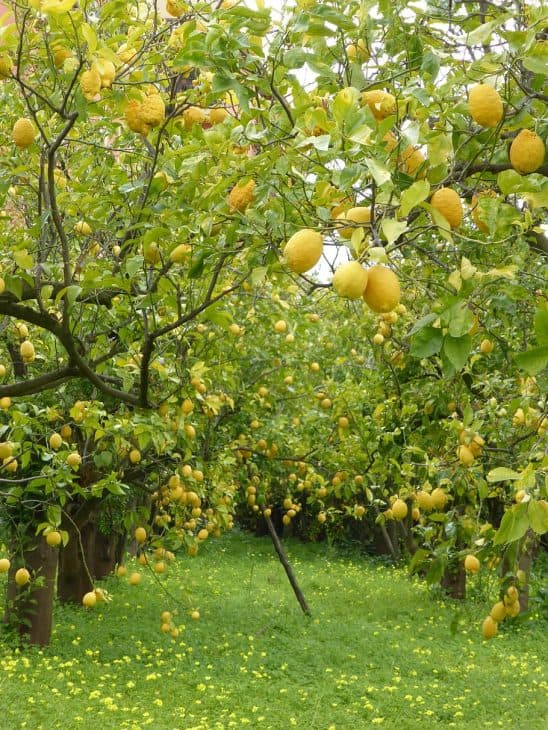
Italian Sorrento lemons have an oval shape and a thick and bumpy rind. Its pulp is translucent and yellow, very juicy, and has few to no seeds, making it perfect for a variety of uses. They bloom all year long, but peak in the spring through the late fall months.
As far as taste is concerned, these lemons tend to be on the acidic side and somewhat tart, but they are not bitter. They are typically used for zest and for their rind and juice. You can also use them to make preserves, jams, and custards.
Italian Sorrento lemons have a zest that is very aromatic and a tangy citrus flavor that can be used in everything from pasta dishes to meat. This is one of the many lemon tree types that offers a variety of uses, even being used in beverages, sorbets, and marinades.
Much like other types of lemons, you can make Italian Sorrento lemons last a lot longer if you put them in the refrigerator, and you can find dozens of recipes that recommend these lemons for great flavor.

